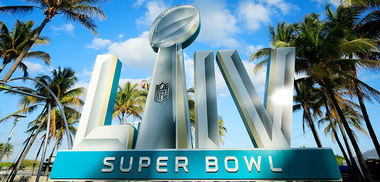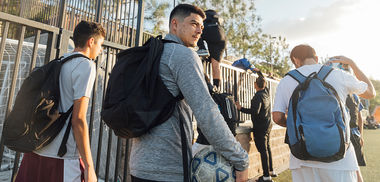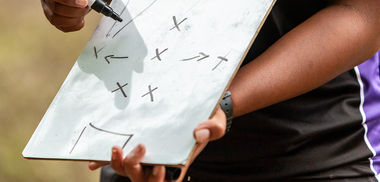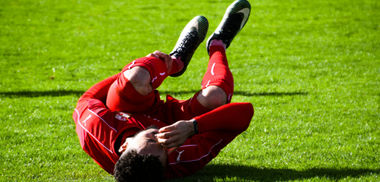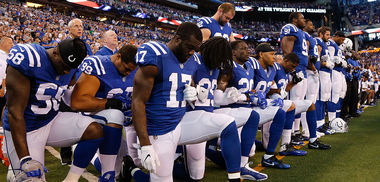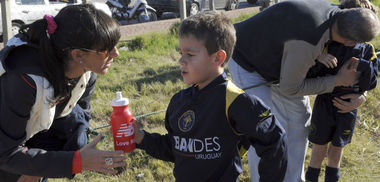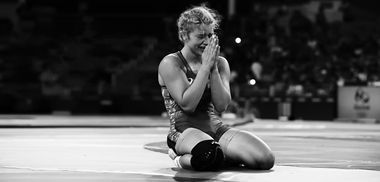Kevin McLaughlin, USA Hockey’s Director of Youth Hockey Development, was not looking forward to opening his email in January 2009. He knew it was going to be full of angry posts. He knew he and his colleagues at USA Hockey would be accused of destroying the game and taking the toughness out of the sport. He knew that the haters would be out in full force, trying to run the leaders of USA Hockey’s youth development team out the door.
But, USA Hockey’s leadership also knew they were in the right. They knew that in order to survive, grow, and improve, youth hockey needed to change. They needed kids to play cross-ice hockey in order to get more touches, interactions, and enjoyment out of every game.
Get our "Top Articles" sent to your inbox weekly.
They knew that body checking was not a necessary component of 10-year-old hockey, as growing children were more susceptible to injury and less likely to develop skillfully if the game was overly physical.
They knew that there was no need for a 12 and Under national champion to be crowned, as this title served the egos of the adults watching far more than the needs of the children playing.
They knew they needed a new model. Youth sports was on a race to the bottom, and hockey was about to pull out of that race.
They knew they needed to win the race to the right finish line.
The new finish line was focused on enjoyment, development, and increased participation. It worried less about childhood achievement and more about developing lifelong hockey players. They knew that more players, who were technically proficient, would allow the cream to rise to the top, instead of the current model in many sports where we throw a bunch of eggs against a wall and hope one doesn’t break. They knew that many of the problems were caused in large part by sports models designed to serve the needs, values, and priorities of adults, and not of the children who are participating.
Why We Need the Athlete Development Model
Implementing the best research available, USA Hockey introduced the Athlete Development Model (ADM) in 2009, and today the sport is thriving. In an era when most major youth sports are losing numbers rapidly—since 2010, baseball participation is down 5%, basketball is down 8%, and soccer is down a whopping 23.5%—hockey is growing, setting participant numbers records again in 2016-2017, and now running programs in all 50 states.
If you are wondering whether this made US Hockey less competitive, here are the stats from 2017. There were four world championship events held, and USA Hockey won all four: Women’s World Championship, U20 men, U18 Men, and U18 Women.
Every national governing body in US sports today is developing their own version of the ADM. They are using science, research, and best principles from across the globe to re-engage kids in sports. It can’t happen soon enough!
Every week, we hear horror stories about this race to the bottom in youth sports. We get emails about 8-year -soccer players being asked to sign contracts stating that they will not play another sport during the year. We hear about 10-year-olds who travel long distances to “important tournaments” and then don’t get any playing time. We even got an email about a 9-year-old football player whose coach would not even put him in at PRACTICE! When the dad asked the coach why his son didn’t play, the response from the coach was “he doesn’t know the plays!” Seriously, coach?
It is time for the sensible people to take back youth sports, and give it to the kids. It’s time to stop focusing on the mad rush to crown the youngest national champion, or rank elementary school kids as the “best 8-year-old baseball team in the US.” It’s time for the adult agenda to take a back seat to the needs of the kids.
If you are a parent who truly cares about your child’s long-term health and well-being, or if you are a coach with the needs of your athletes in mind, I hope you will join us in saying “It’s time to start winning the race to the right finish line.”
How do we do this?
Focus on early engagement, not specialization: Help your kids fall in love with their chosen sport/sports, and let them own the experience. Engagement is about the love of activity, self-motivated participation, and looking at the short-term (I love what I am doing) vs the long-term (back to the grind). Sampling different sports early on promotes engagement and increases the likelihood of lifelong participation in sports, while decreasing burnout and non-participation rates. Kids, even pros, need to “play sports,” not work them.
Take the long view and win the marathon, not the sprint: Outside of female gymnastics and figure skating, where athletes peak in their early to mid-teens, in most sports athletes peak in their 20s.There are many unique pathways to the top, but pouring a twenty-year-old’s amount of training hours into an 11-year-old will likely guarantee short-term success, yet sets up many roadblocks for the long-term. If you have a late bloomer, help keep them in the development pathway and foster love of sport, and watch them learn grit and resilience as they compete against bigger, stronger, faster kids. When they catch up physically, watch out!
Focus on behaviors, not outcomes: Early success in sport is often a result of being bigger, faster and stronger—or older according to the relative age effect—and not a great predictor of long-term performance. What is a good predictor of excellence in the teenage years and beyond, however, are great behaviors and habits. Is your athlete coachable? Are they a hard worker? Are they committed? Do they listen? Are they accountable? Coaches and parents must realize that performance is a behavior, not an outcome. Our job as parents is to help our young athletes form great habits first, and then eventually outcomes start to take care of themselves.
Develop the entire person, not just the athlete: Sports skills become life skills. No matter how good your kids are at sports, even if they are one of the .01% who turn professional, they will still have two-thirds of their life where the life skills matter much more than their sports skills. Sports are a great venue for developing life skills such as working with others, embracing the process, dealing with adversity, and so much more. Be sure that your sporting experience is teaching those things, instead of compromising them to win this weekend.
Your town, your club, your sport can be the the next USA Hockey. It just takes belief in the science, a long-term vision, a healthy dose of courage to go from good to great, and relentless commitment to serving the needs, values, and priorities of the kids.
It takes a small group of people to stand up and decide to win the race to the right finish line.
I hope you will join our movement! If you don’t know how to get started, send us an email at John@ChangingTheGameProject.com. We can help.
This article is an adapted version of “Winning the Race to the Right Finish Line,” first published at Changingthegameproject.com.


